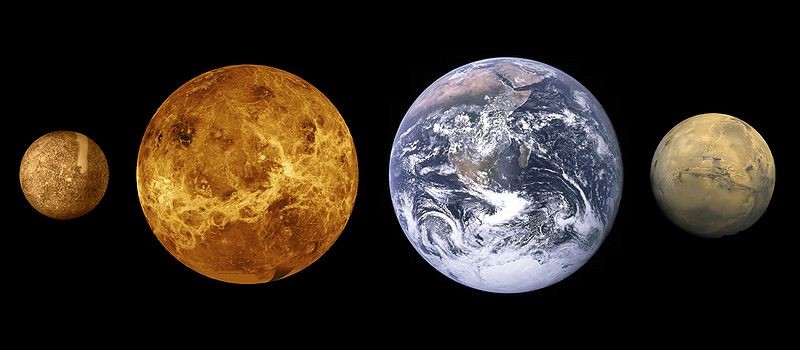To understand the similarities and differences between Venus and Earth, one must delve into the history of the solar system. It all begins, more than 10 billion years ago with a nebula, that is, a cloud of helium and hydrogen enriched with heavier elements due to the explosions of closes stars. This cloud is moving, it is generally rotating but at the local level, the movements are much more erratic.

At random from these movements, one point saw its particle density increase. The gravitational pull of this area becomes more important than the surrounding areas. Because the attraction is stronger, it attracts more material, which further increases its attraction and eventually creates a ball of hydrogen within which the pressure and temperature increase. With increasing attraction, this body begins to attract all the elements not being rotating fast enough. After a long time, the pressure and heat are so central that hydrogen atoms eventually fuse releasing significant heat. This heat makes the situation even worse and promotes other mergers, quickly. It is the whole heart of this star that becomes a real thermonuclear explosion whose radiation rises to the surface. A star was born.

Around, in a now-lit merry-go-round, the rotating elements formed a disk called protoplanetary disk. In the same way that the star, within this disk, some dust clumps (accretion), attracts other dust creating an increasingly large body, asteroids. As time goes by, the most important bodies become embryos from a planet called a protoplanet that cleanse everything in their orbit.
With a subtle gravitational game, some protoplanets get closer and collide like Theia and the Earth embryo. In other places, gravitational forces are too disturbed to form important bodies and produce a belt of asteroids like between Mars and Jupiter or the Kuiper Belt beyond the gas giants. Finally planets migrate and are ejected like Neptune which would have been much closer to the sun. But, destabilized by the gravitational coupling of Saturn and Jupiter, Neptune would have been pushed beyond Uranus disrupting the Kuiper belt that extended there at the time and causing asteroid falls in the inner solar system calling great late bombardment. Around the planets, certain elements have placed themselves in orbit such as the flows of the Theia-Earth partition and form satellites (like our moon) or rings of smaller elements like those of Saturn.

The great game of cosmic pool, still in progress, having created the solar system, has spawned 8 major planets. To obtain this title, they must meet three criteria, which are to have a size sufficient for it to be a round shape (hydrostatic balance), that they are in orbit directly around the sun and that they have cleaned their orbit (they must not cross more massive bodies than them, which excludes Pluto which crosses Neptune).
The four planets furthest from the sun are gas giants surrounded by rings and satellite processions, which in the West bear the name of the most powerful gods of ancient Rome. At the outer end of the system is Neptune, the coldest blue giant of all. Closer to us is Uranus, very similar to Neptune, it is noticeable because its axis of rotation is completely lying on the orbital plane. Coming a little closer, we find Saturn, much more massive than these sisters already mentioned, it is best known for these rings. The last and closest to us is Jupiter, the largest planet in our system and with multicolored cloud bands. Around each of these planets orbits a procession of satellites that abounds with different environments, ranging from Titan with its methane rivers to the volcano of Io through the geysers of Enceladus.

The four inner planets are telluric and much smaller, and, with the exception of Earth, bear in the West the names of more trivial Roman gods. The farthest of these planets is covered with iron oxide dust that gives it a red glow, earning it the name of Mars, the Roman god of war. It is twice as small as Earth, has a small atmosphere and two small moons but has exceptional geological features such as volcanoes about ten kilometers high or canyons thousands of kilometers long. On the other hand, as close as possible to the sun, turns at all speed, a planet that has taken the name of Mercury, the message god. This planet is even smaller, and resembles in many ways the Moon with its surface studded with impacts. Between these two planets is the Earth and its twin whose brightness in our sky has earned it in the West the name of the Roman goddess of beauty, Venus.
